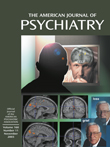Originally published in 1995 as a guide to the perplexed psychoanalyst, this book has now been reissued in accessible paperback format by American Psychiatric Publishing in recognition of its relevance to general psychiatrists and, indeed, to all mental health professionals. The issue of boundaries and boundary violations transcends disciplinary lines; all professionals who assume a therapeutic or fiduciary position are inevitably confronted by the ethical, legal, and technical questions that govern their relations with those whom they serve. It is these questions that Drs. Gabbard and Lester address in this thoughtful, scholarly, and humane volume, which should be required reading for all who seek to care for persons in distress.
The authors begin with a general discussion of the concept of boundaries as developed in the psychoanalytic literature over the years since first adumbrated by Freud himself. They consider both internal (or intrapsychic) boundaries and external (interpersonal) ones; it is, of course, the latter that will be of greater importance to the practitioner. They devote a chapter to the exposition of what they call the “psychoanalytic frame”—that is, the formal structures and conditions under which the therapeutic relationship is (or should be) conducted and that would be pertinent to any psychotherapeutic situation.
The bulk of the book is given over to extended consideration of specific types of boundary violations, both sexual and nonsexual, each instructively illustrated by clinical vignettes taken from actual psychoanalytic experience. The authors delineate four types of therapists who may be prone to such violations: the psychotic; the predatory, psychopathic, or perverse; the “lovesick”; and the masochistic. It is in the interaction with particular kinds of patients, especially those who have suffered experiences of sexual traumatization or severe deprivation in their earlier lives, that such violations are most likely; therapists who are themselves suffering from personal losses or other disruptions in their lives are particularly susceptible.
Above all, the authors emphasize the ubiquity of countertransference phenomena in all therapeutic encounters and the fact that all of us are potentially at risk. The need for careful and constant self-scrutiny and for timely and appropriate consultation with colleagues is underscored. They emphasize that the use of supportive techniques neither requires nor justifies the erosion of professional boundaries. Further, they make a strong case for the maintenance of such boundaries in the posttermination period; in their words, “ posttermination sexual relationships should be regarded as unethical and clinically ill-advised in virtually every situation” (p. 149).
Finally, the book offers a well-considered discussion of the difficulties encountered in attempts to deal with such situations when they are brought to external attention. They propose a set of guidelines for their management that, though specifically tailored for the psychoanalytic community, can readily be extended and applied by other professional groups. The aim, in all cases, is to adjudicate the matter as humanely as possible so as to protect the interests of the patient while seeking appropriate therapeutic or disciplinary management of the offending therapist.
Ultimately, the authors remind us that we are not dealing here with “good guys” versus “bad guys”; violations of boundaries are not respecters of gender, sexual orientation, or even quality of training. They recommend the institution of courses in professional ethics in training programs and decry the alarming decline in the quantity and quality of teaching and supervision of psychotherapy in psychiatric residency programs. This book should be carefully studied by every psychiatrist, psychiatric educator, and psychotherapist, both for the protection of their patients and students and for their own self-interest.

